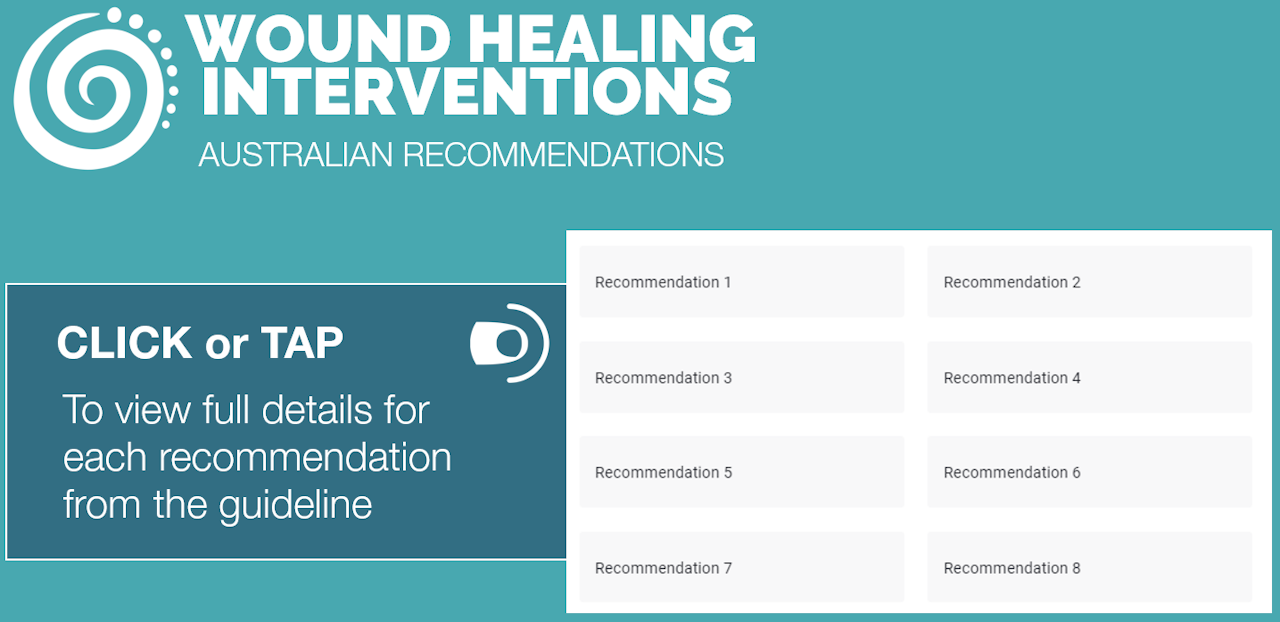

WOUND HEALING INTERVENTIONS RECOMMENDATION LIST | |
RECOMMENDATION 1 | |
Remove slough, necrotic tissue, and surrounding callus of a diabetic foot ulcer with sharp debridement in preference to other methods, taking relative contraindications such as pain or severe ischemia into account (GRADE strength of recommendation: strong; quality of evidence: low) | |
RECOMMENDATION 2 | |
Dressings should be selected principally on the basis of exudate control, comfort and cost (strong; low) | |
RECOMMENDATION 3 | |
Do not use dressings/applications containing surface antimicrobial agents with the sole aim of accelerating the healing of an ulcer (strong; low) | |
RECOMMENDATION 4 | |
Consider the use of the sucrose-octasulfate impregnated dressing as an adjunctive treatment, in addition to best standard of care, in non-infected, neuro-ischaemic diabetic foot ulcers that are difficult to heal (weak; moderate) | |
RECOMMENDATION 5 | |
Consider the use of systemic hyperbaric oxygen therapy as an adjunctive treatment in non-healing ischaemic diabetic foot ulcers despite best standard of care (weak; moderate) | |
RECOMMENDATION 6 | |
We suggest not using topical oxygen therapy as a primary or adjunctive intervention in diabetic foot ulcers including those that are difficult to heal (weak; low) | |
RECOMMENDATION 7 | |
Consider the use of negative pressure wound therapy (NPWT) to reduce wound size, in addition to best standard of care, in patients with diabetes and a post-operative (surgical) wound on the foot (weak; low) | |
RECOMMENDATION 8 | |
We suggest not using negative pressure wound therapy in preference to best standard of care in nonsurgical diabetic foot ulcers (weak; low) | |
RECOMMENDATION 9 | |
Consider the use of placental derived products with informed consent as an adjunctive treatment, in addition to best standard of care, when the latter alone has failed to reduce the size of the wound (weak; low) | |
RECOMMENDATION 10 | |
We suggest not using growth factors, autologous platelet gels, bioengineered skin products, ozone, topical carbon dioxide, and nitric oxide in preference to best standard of care (weak; low | |
RECOMMENDATION 11 | |
Consider the use of autologous combined leucocyte, platelet and fibrin as an adjunctive treatment, in addition to best standard of care, in non-infected diabetic foot ulcers that are difficult to heal only if this adjunctive treatment becomes approved for use in Australia (weak; moderate) | |
RECOMMENDATION 12 | |
We suggest not using agents reported to have an effect on wound healing through alteration of the physical environment including through the use of electricity, magnetism, ultrasound and shockwaves in preference to best standard of care (weak; low) | |
RECOMMENDATION 13 | |
We suggest not using interventions aimed at correcting the nutritional status (including supplementation of protein, vitamins and trace elements, pharmacotherapy with agents promoting angiogenesis) of patients with a diabetic foot ulcer, with the aim of improving healing, but note that nutritional status should be reviewed, and adequate daily nutritional requirements should be met as part of best standard of care (weak; low) |
